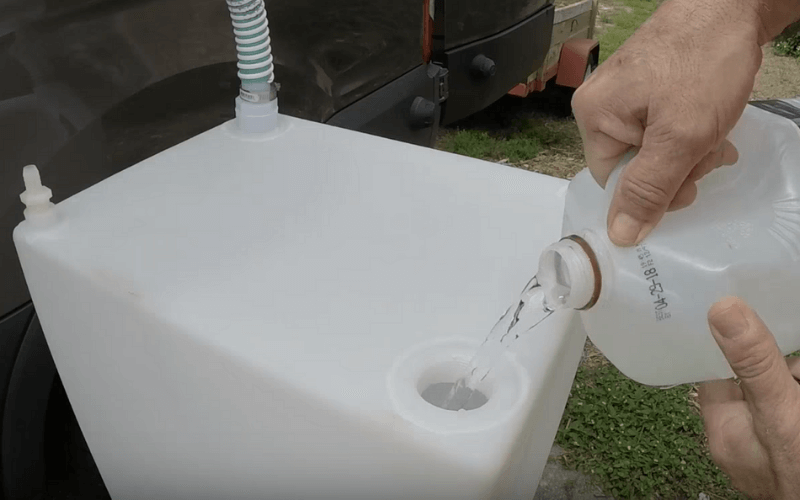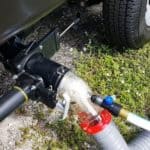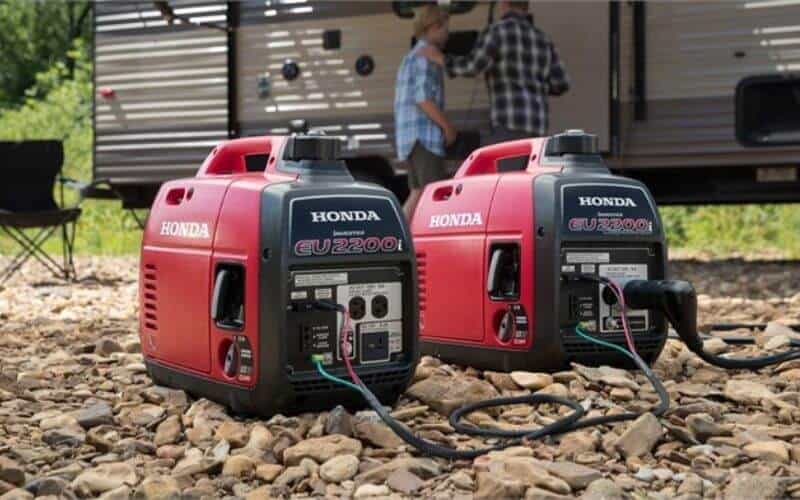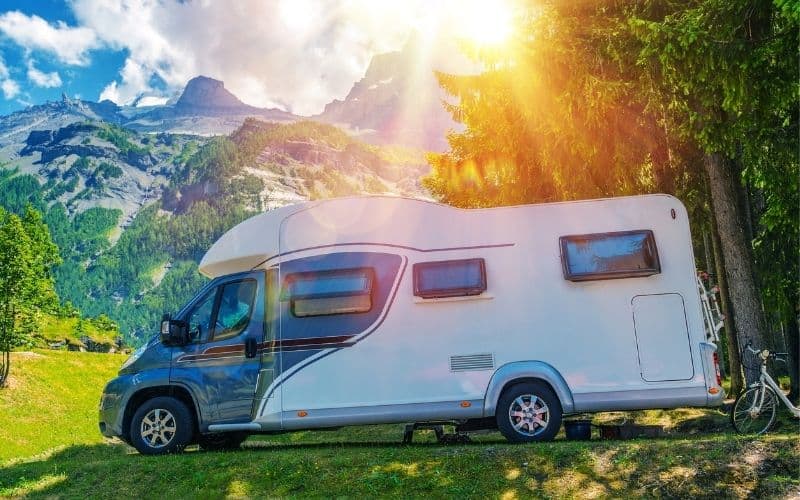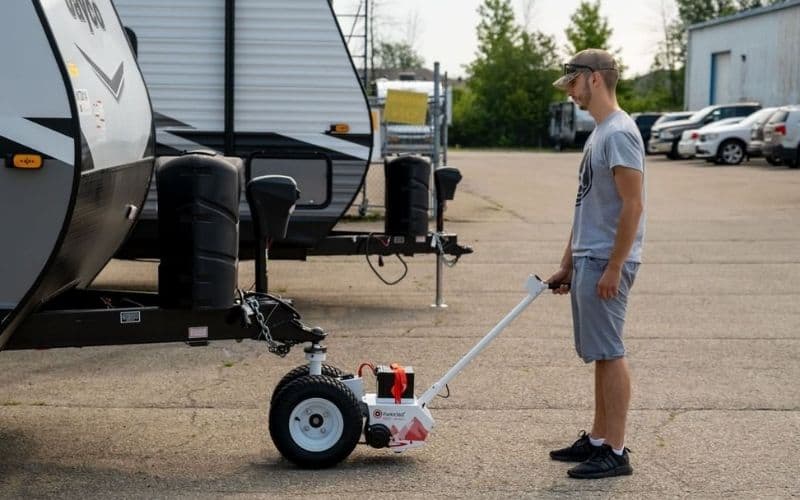If you need to stay in your RV for a prolonged period of time, or you have two trips booked close together, then planning out how to use your supplies is likely on your mind.
Key amongst all them, of course, is your freshwater supply.
If you are going to be living in your RV for a prolonged period of time or boondocking for an extended vacation, then you might be wondering how long you can keep fresh water in your RV’s freshwater tank?
The answer here can vary depending on a few different variables. Still, most RV’s are not meant to hold water for long periods of time. Doing so can invite things like bacterial problems, possible mold, and mildew, or water that just plain tastes funny.
In this article, we’ll take a closer look at the finer points of an RV water tank. This includes some key questions as well as things like:
-
The basics of how it works
-
How to properly maintain your RV’s fresh water tank
-
How often you need to refresh your RV water supply
-
How to deal with some common RV freshwater tank problems
Is It Safe To Drink Water From RV Freshwater Tanks?
On a technical level, the answer to this question starts with the original source of the water.
If you are boondocking and you need to fill your freshwater tank, a desperate move like filling up from a kindly person’s garden hose probably isn’t the best idea.
If you are at home and you have a trusted municipal water source to fill from, then you are likely okay.
This is all assuming that you have been diligently cleaning and maintaining your RV’s fresh water tank.
Even then, there are some people who do an exemplary job of maintaining their freshwater tanks, who still refuse to use them for drinking without first boiling.
This is due in large part to things like off-putting odors that occur in many tank-stored water sources, as well as the concern over bacteria or other harmful microbes establishing a presence while the tank was not in use.
Some people will carry gallon jugs of bottled water for drinking and cooking, then only use the fresh water tank’s supply for washing or bathing.
Not only does this approach ensure that you and your family are consuming truly safe water, but it also helps to extend the overall volume of water in your on-board storage tank.
How Long Can I Safely Store Freshwater In My RV Storage Tanks For Drinking?
If you have been diligent about cleaning and properly maintaining your RV’s fresh water tank, the prevailing rule of thumb is that water from a reliable source should be consumed within two weeks.
Any longer than that and the threat of bacteria or other microbes establishing a presence starts to increase.
Can I Still Use Older Freshwater For Washing And Bathing?
Beyond two weeks the freshwater in your storage tanks should still be good for washing dishes, flushing the toilet and taking showers.
Though you might notice that it sometimes takes on a faint or even unpleasant odor.
If that odor smells like plastic, then it’s likely just the tank itself. This sometimes happens sooner in hot conditions.
If it takes on a musty or acrid odor, it might be a sign that your freshwater tank has come to harbor a microbial colony.
In fact, there are thousands of naturally occurring mold spores floating in the air. When one finds a stable source of moisture, and conditions are warm enough, they can start to reproduce.
While most strains aren’t harmful to consume in small doses, there are a few types of “Toxic Mold” that can be harmful, especially for people who are susceptible to inflammatory conditions.
How Does An RV Freshwater Tank Work?
An RV freshwater tank is essentially just a bulk storage tank that is built into the frame structure of the RV underbelly.
Most are made from reinforced fiberglass. Though there are a few that are made from other materials like heavy-duty plastic.
When you open a tap, turn on a faucet, or flush an RV toilet a small water pump draws water from the tank and disburses it through the pressure released valve.
Water from the sink or the shower is then sent to a “Gray Water” tank, while wastewater from the toilet being flushed is stored in a “Black Water” tank.
How Do I Maintain A Clean Freshwater Tank To Keep RV Water Fresh
Any type of water storage tank needs proper maintenance, frequent refreshing, and occasional cleaning to maintain a healthy interior.
When you are lax in any of these phases, it increases the chances of bacteria and other harmful microbes setting up a presence in the tank’s interior.
Once this happens, it can be very difficult to confidently sanitize the fresh water tank again.
It also means that older freshwater tanks, tanks that were stored improperly, or an RV that has been in storage for a long time, are increasingly prone to bacterial and fungal problems.
You also shouldn’t overlook the very real threat of harmful algae developing inside a stale water tank.
Flushing A Freshwater Tank
Unless you are boondocking for a prolonged period of time, it’s best to purge/drain and refill an RV’s fresh water tank at least every two weeks.
This can often be as simple as running the water in the shower or putting a secondary hose down the toilet.
If nothing else, it’s also a good time to also purge out the gray and blackwater tanks. Many RV dump stations recommend this and some even offer reliable quality water to replenish your freshwater tank afterward.
Sanitizing A Freshwater Tank
While frequent purging and replenishing will help give you some peace of mind, you still should consider sanitizing from time to time.
Even a small amount of lingering water can host a large population of microbes. Ideally, it helps to take a little time before each trip to sanitize the tank.
If nothing else, it gives you an excuse to take a miniature break from the tediousness of packing!
The simplest way to sanitize a freshwater tank is to use plain-old household bleach.
The prevailing wisdom is to mix it into the tank at a ratio of around 1/4 teaspoon (16 drops or 1.5 milliliters) of household liquid bleach to 1 gallon (16 cups) of water.
Once you fill the tanks with the bleach/water mixture, go for a little drive. It might be the perfect time to motor over and fill up the gas tanks.
When you get back, purge the fresh water tank and get ready to fill it with pure water again and dump it.
Continue to do this, until the water in the tank no longer has that telltale chlorine bleach odor.
After all, drinking even a small amount of bleach can give you some serious stomach trouble!
While bleach is the quick and easy option, it’s not the only way to sanitize a freshwater tank. There are people who swear by using vinegar, in a similar rinse and repeat way.
However, RV product manufacturers are now offering oxidizing compounds that are specially formulated to clean freshwater tanks.
You still have to fill and purge to eliminate them, but they have far fewer chemical concerns, which can be a big deal if you will be traveling with little ones.
Remember To Use A Proper White Filling Hose
If you are new to RVs or perhaps are renting one for the first time through an organization like RVshare or Outdoorsy, then you might not be up-to-date on all the proper standards and safe practices.
With some RV freshwater tanks, you might be able to jam a garden hose into the intake valve and get away with it, but you really should use a dedicated freshwater filler hose.
They are designed to fit tight and will be less likely to carry off-flavors with them into your RV’s fresh water tank.
They are usually white and sold in short sections. The advantage here is that you can also sanitize the short hose easily, which would otherwise be a chore with a green garden hose.
Not to mention the protozoa, mildew, mold spores or other pathogens that might have taken up residence in a garden hose.
What Are Warning Signs Of A Freshwater Storage Tank Problem?
It can be hard to know what’s really going on inside your RV’s fresh water tank.
Even if you are diligently flushing and refilling your freshwater tank every two weeks as well as sanitizing before every trip, it is still possible for things like bacteria, mold, mildew, or even algae to establish a presence in your tank.
This is even more likely to be an issue in hot, humid times of the year when things like airborne mold spore density are at it’s highest.
Some common symptoms of a freshwater tank problem include:
-
Foul Odors
-
Off-putting flavors
-
Green, brown or orange discoloration in the water
-
Occasional clogging in the water lines
Dealing With Algae In An RV’s Freshwater Tank
Algae is a funny organism, in that it needs sunlight to truly thrive. Yet it can still grow slowly during hot conditions in an RV’s fresh water tank.
The more heat and humidity in the local weather, and the longer the water has sat in the tank, the more likely you are to develop an algae problem.
If your RV has a water heater, an organic odor or discoloration in hot water is often the first sign of an algae problem in the freshwater tank.
Especially, if your water heater isn’t set to keep the internal temperature above 120-degrees, or you frequently run without electricity for extended periods of time.
In a situation like this, the water heater is essentially receiving a minor amount of algae from the fresh water tank, which is then thriving in the more favorable conditions. You can think of it a little bit like a canary in a coal mine.
The prevailing wisdom when dealing with an algae problem is to flush it with bleach just like you would if you were sanitizing the fresh water tank before or after a long trip.
While you might be able to get by with this route, I think you’ll feel more confident in your success if you first start with algaecide.
You can usually find some that are specially formulated for RV tanks in a camping supply store.
Some people will use it for sanitizing large Aquatainers or other storage tanks. Just follow the directions on the label, which usually calls for half a cup per gallon of water.
Once you’ve run a course of algaecide, you can then follow up with bleach for thoroughness and a little peace of mind.
While this is perhaps a little bit of overkill, it’s still nice to sleep at night knowing you’ve done everything in your power to clean the tank.
Can Mold Develop In An RV Freshwater Tank?
Mold and mildew spores occur in nature. Chances are unless you are in a sealed “Clean Room” that you have some floating around you right now.
When they find a wet, porous surface these spores can set down the microscopic root. They can even replicate and colonize an area if the humidity is 55% or higher.
This makes your RV’s fresh water tank very appealing to them, as humidity is often high, there’s moisture available, and the sun, which can kill them doesn’t shine.
Signs of a mold problem in a RV freshwater tank include things like an earthy odor or flavor. Certain strains of mold can also alter the color of the water. However, you won’t really notice it in your hot water, as mold tends to die at a lower temperature!
Many people attempt to use bleach to kill mold. Most of the time, this will be sufficient for killing a minor mold colony.
Yet a more significant colony could require different methods. By its chemical nature bleach is very volatile and tends to kill surface microbes.
However, a large mold colony on a porous surface can sink its microscopic roots so deep that bleach can’t kill them before the chlorine component loses its potency.
What ends up happening is that the surface mold dies, and it appears that the problem is solved.
A few weeks might even go by before it appears that the mold problem has mysteriously, and often rapidly returned.
This is even more likely to be the case if you didn’t properly winterize the RV’s fresh water tank when storing it and then waited until late spring or summer before using it again.
To spare yourself frequently bleaching and worry about if you killed all the mold, you should turn to a tank cleaner that is specifically formulated to use oxygen.
Some of the more common active ingredients that you might find for doing this include things like:
-
Sodium hypochlorite
-
Chlorine dioxide
-
Granular hydrogen peroxide
Is It Safe To Bathe In Mold-Infested Water?
For most people bathing in mold-infested water might be off-putting, but it won’t cause significant harm.
Though there is a small percentage of the population that can have adverse skin reactions when exposed to mold and the mycotoxins it can release into the water you bathe in.
This usually manifests as minor rashes and itchy skin.
If you or a member of your family has a history of inflammatory conditions, water that’s affected by mold is more likely to be an issue.
In Conclusion
Your RV’s fresh water tank plays an important role in providing you with the water you need to wash and bathe.
Some people use it as a source of drinking water, especially boondocking.
If you aren’t 100% comfortable with how clean your RV’s fresh water tank might be, then it’s probably wise to pack along your own bottled water.
Gallon jugs of drinking water are relatively inexpensive, and you can store them as needed in the RV refrigerator to keep them cold.
You can then pour out what you need into reusable portable water bottles.
Not only will this ensure that you and your family are drinking clean water, but it will also extend the volume of your freshwater tank.

